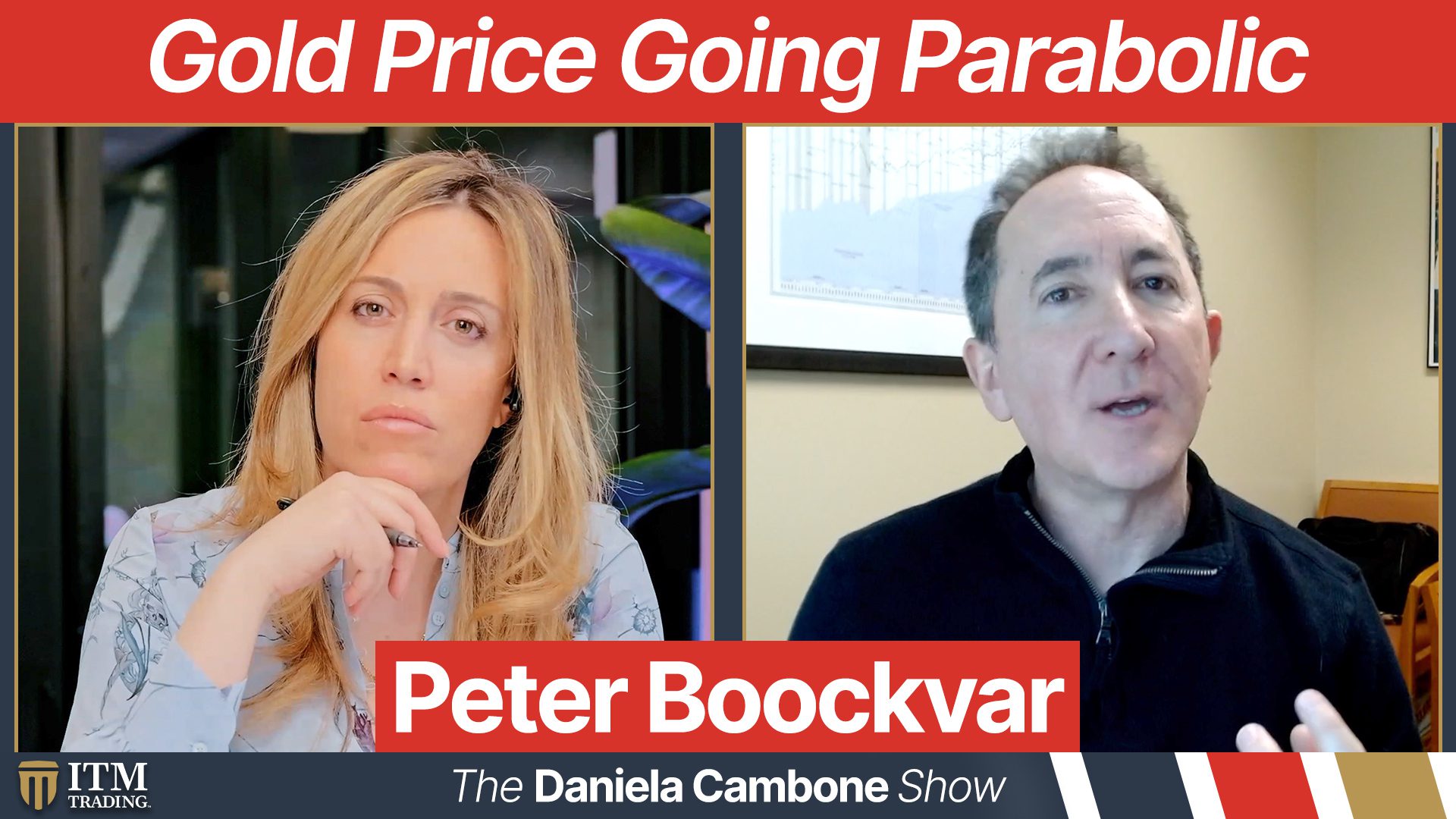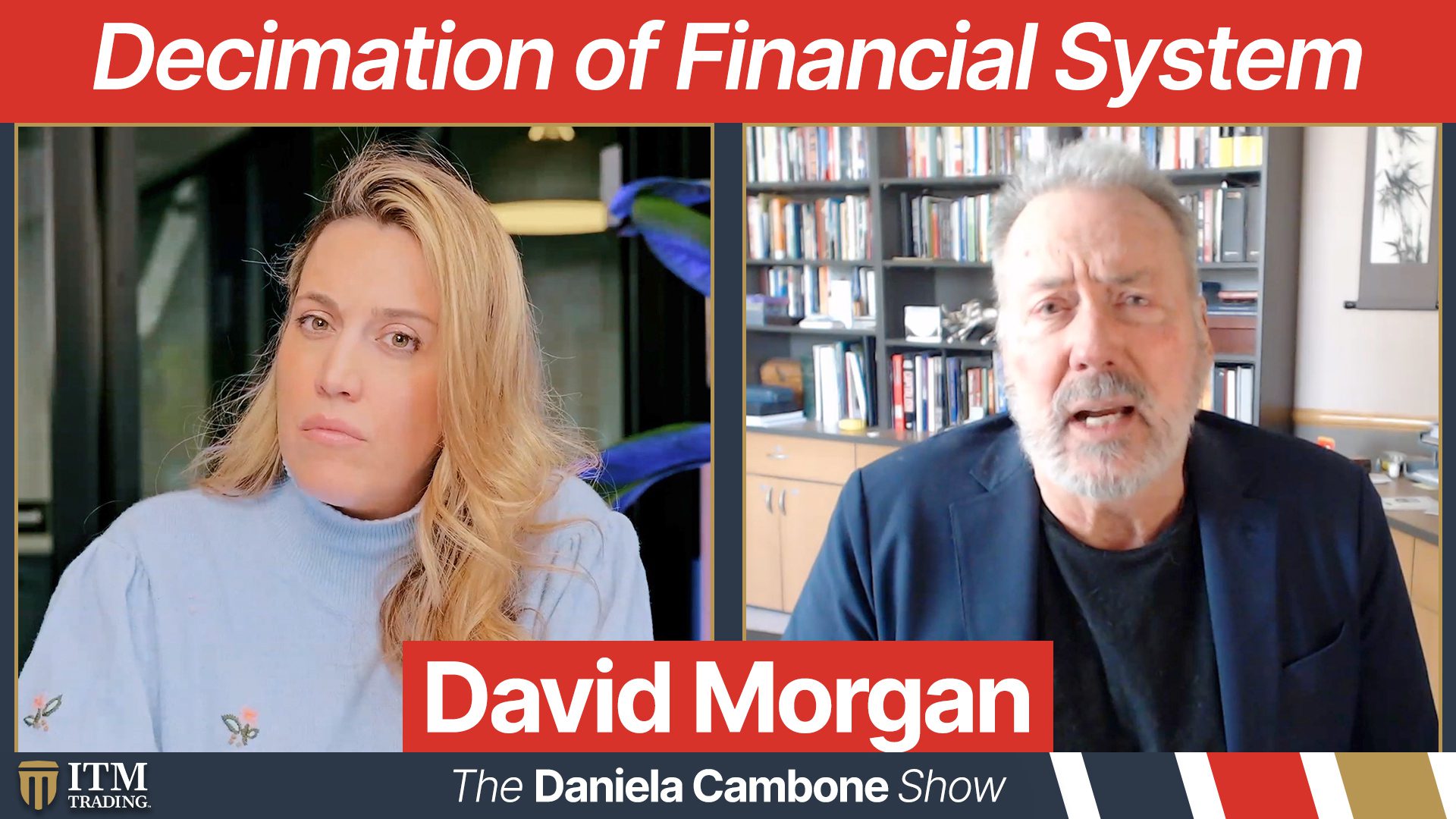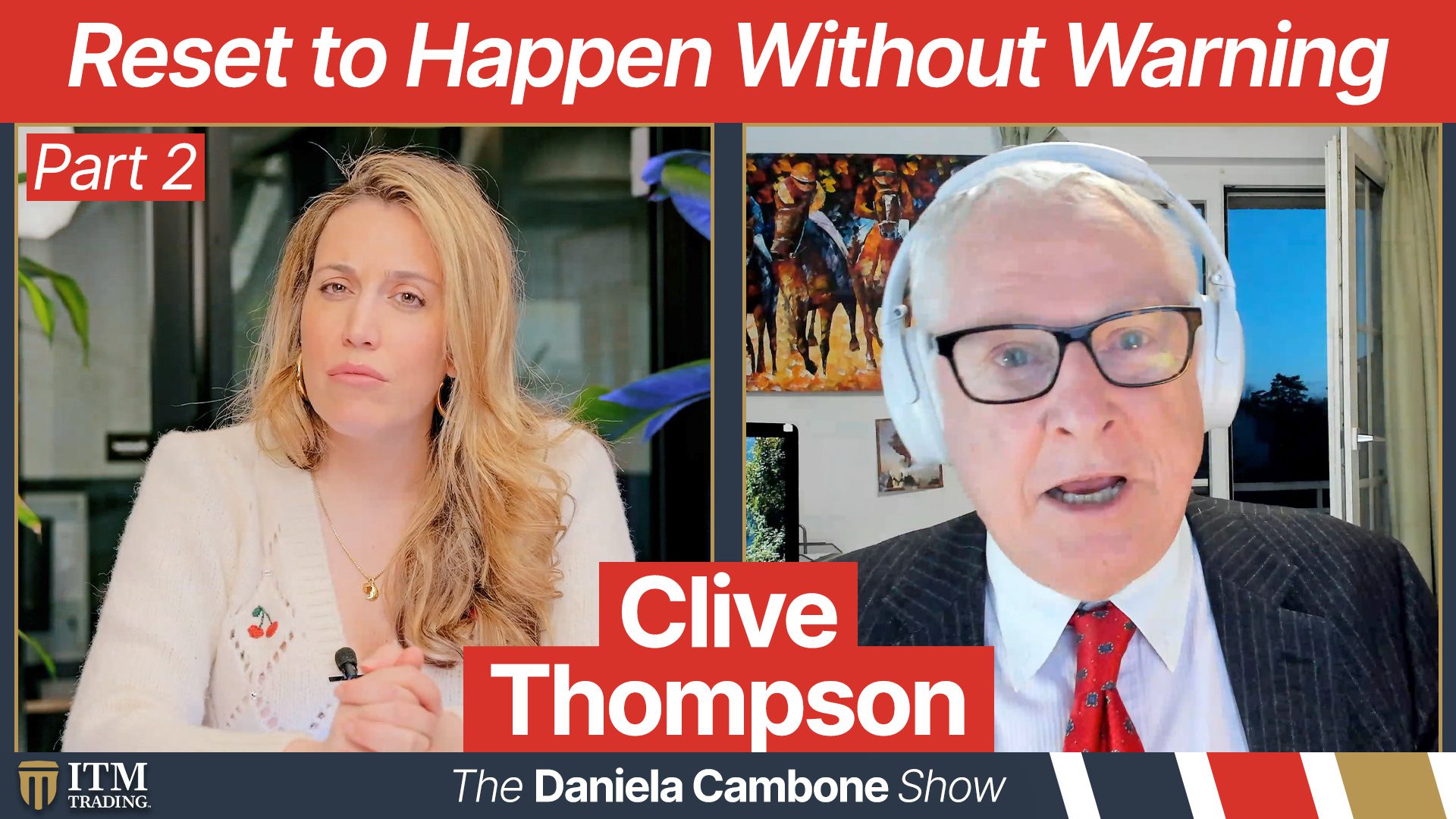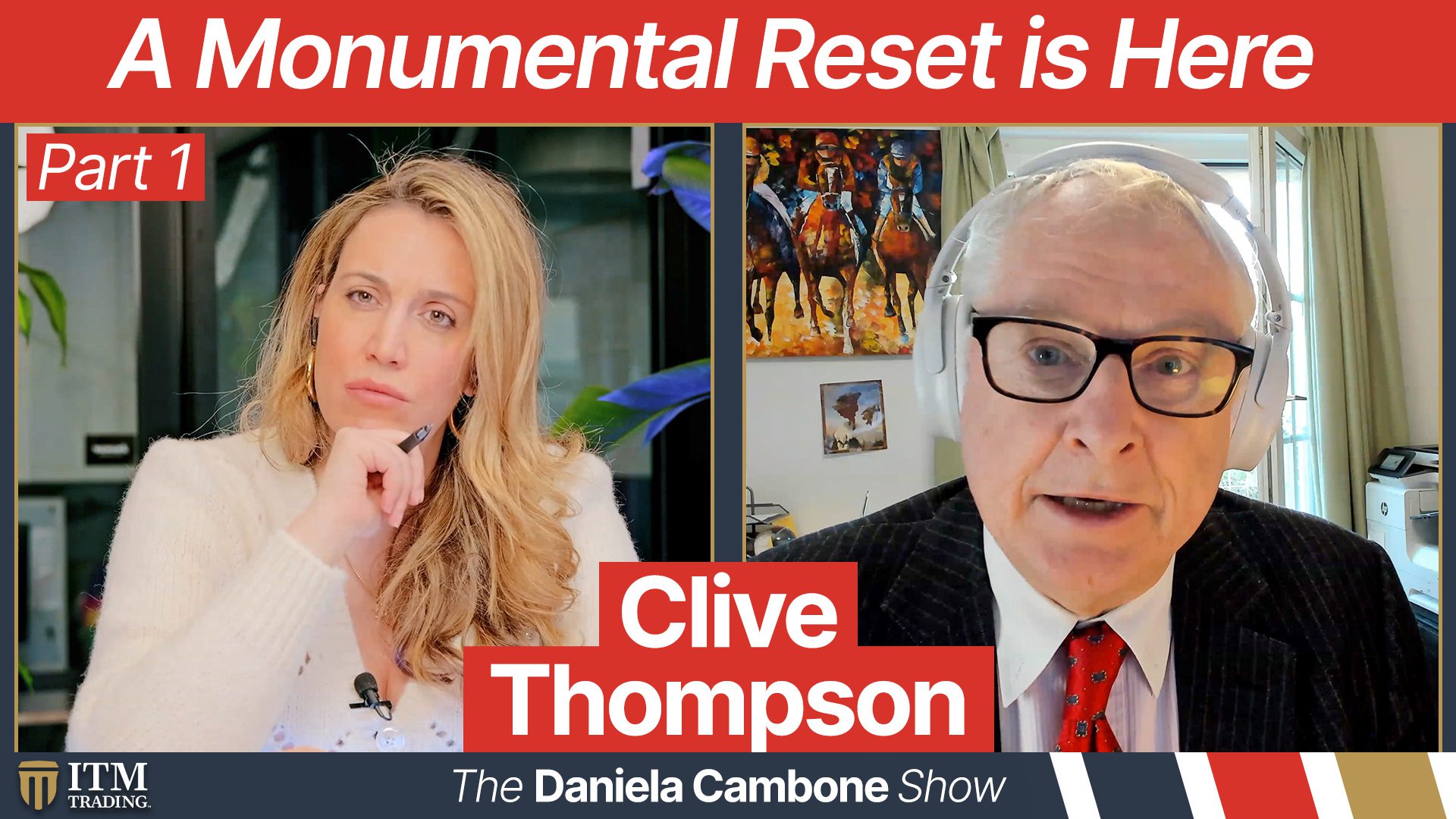Banking Crisis Back to Haunt Us? Why We Can’t Rule Out a Complete System Failure: Jim Bianco
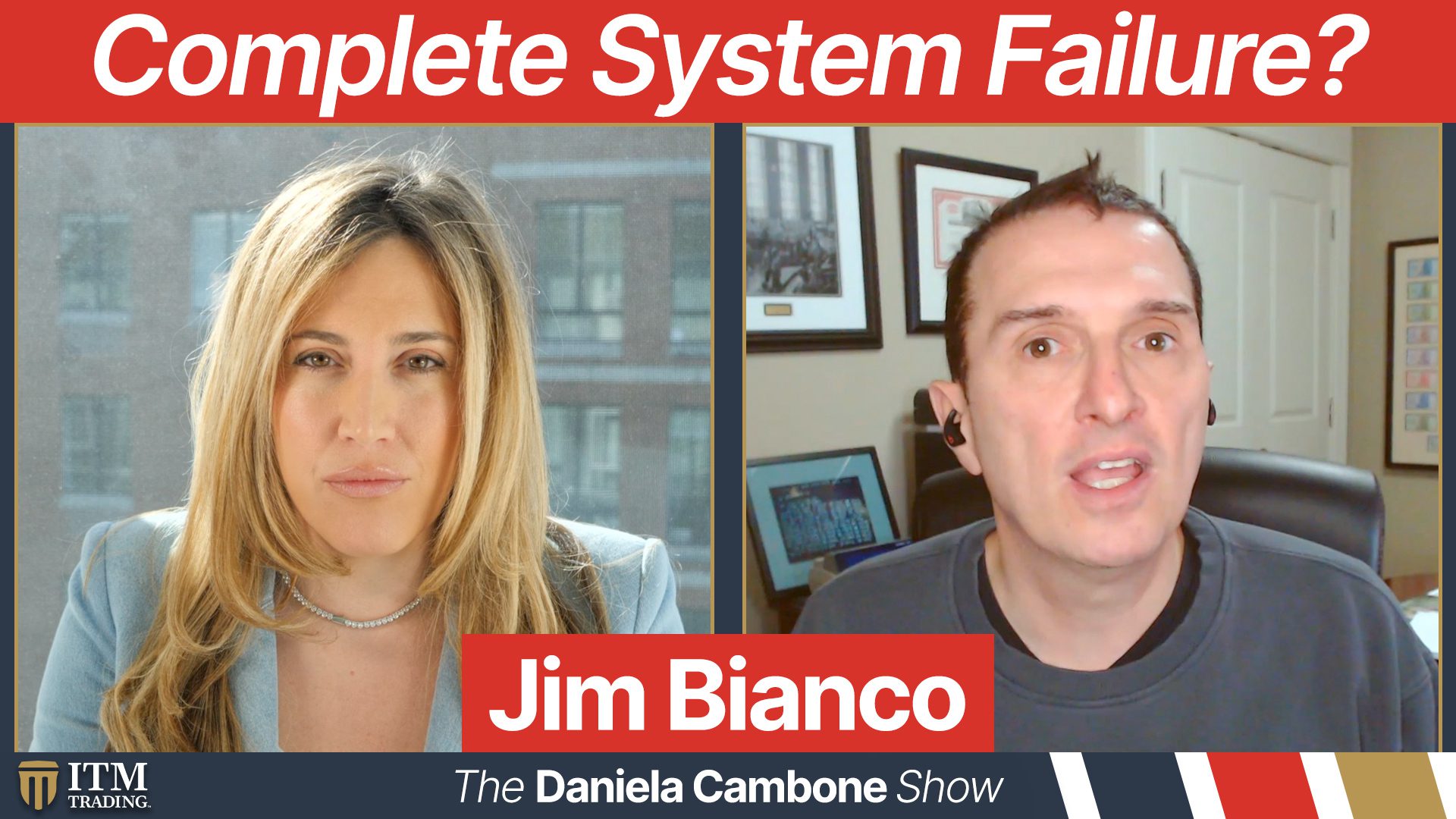
Daniela Cambone speaks with Jim Bianco, founder and president of Bianco Research, to discuss the recent rise in Treasury yields, its impact on the economy, the state of the banking system, and the real estate market. Bianco explains that the rise in Treasury yields indicates a rejection of previous lows, setting up a base for higher yields. “It means that the economy is doing OK,” he continues. However, he points out that inflation becomes a concern as the Fed may not cut rates until the summer. Additionally, Bianco states that systematic risk within the U.S. banking sector cannot be ruled out, as many smaller banks engaged in commercial real estate lending have been negatively impacted by the discounted value of office buildings. “What is an office worth today when people only go there three days a week? And the answer is we don’t quite know, but we do know it’s not what it was worth in 2019.” He also explains the reasons behind the current real estate recession and suggests strategies for protecting wealth in this uncertain environment. Watch the video to learn more about his insights.
CHAPTERS:
0:00 10-year yield and the Fed
2:03 Economy
4:33 Wall Street and the Fed rate cuts
7:01 Wealth disparity
10:10 U.S. equities outlook
14:46 Election year
17:25 U.S. banking system
22:03 Real estate recession
25:12 Gold
30:09 Owning physical gold
TRANSCRIPT FROM VIDEO:
00:04
Hi, this is Daniela Cambone and welcome back to the Daniela Cambone show here on ITM Trading. Well, the 10-year treasury yield benchmark for mortgage rates rose to 4.1% this week according to Dow Jones market data. Combined with Friday’s increase, it was the largest two-day gain since June of 2022. Why did this happen? And is it significant? Joining me today to talk about this and so much more is my guest, Jim Bianco, founder of the esteemed Bianco Research.
00:33
Jim, so good to see you. Welcome back on the show. Thanks for having me. I know you were tweeting about this, how Treasuries headed for their biggest two-day loss in months, as strong economic data reinforced the message of Jerome Powell and all his friends at the Fed, that interest rate cuts are likely to begin before May. So I want to get your thoughts on this. But first, the move that we’re seeing in yields here, is it something we need to be paying attention to?
01:02
Oh, I think it is. I think a lot of people are not really appreciating the move in yields because last was a very volatile week. So if you look at exactly a week ago, we’re about the same levels that we were a week ago. So they’re assuming not a whole lot happened, but a lot did happen. The market traded down the 10-year yield to around 380, which tested its late December low. And speaking as a technician, it completely failed.
01:31
and it shot right back up to as high as 417 the day before we’re recording. And it’s around 410, 411 right now. And that I think is a rejection of that low and we’re setting up a base for a higher yield. So I think that that’s coming. And I think that people are saying, no, over the last week, it’s been unchanged, you know, wait a week or two. And we’ll see where we are because I think everything looks like higher yields. And what would that mean?
01:59
for the state of the economy? What does it mean for the health of the economy? I think it means that the economy’s doing okay. That you’ve got interest rates moving up on the back of strong, real economic growth after the payroll report that came in at 353,000 jobs and including a big revision to December too, over 300,000 jobs. And that that says that the economy’s doing okay. Now,
02:28
The issue with the economy doing okay is that inflation is now starting to become a worry. I don’t want to say a problem, but let’s say it’s a worry because the same payroll report showed a six-tenths rise in wages, which was way more than everybody expected, which was the biggest monthly increase in wages in two years. Now, maybe some of that was overstated because the workweek fell and that there’ll be some giveback.
02:54
in the February report when we get it at the beginning of next month. But that six tenths number is not going to magically go to one tenth or zero. It’s going to still stay at an elevated number with the strong growth. The concern is, is that the inflation levels that we’re seeing right now might be bottoming out here. Wall Street likes to use a term. Excuse me. Wall Street likes to use a term that we’re in the last mile of inflation. We’re at around three ish percent.
03:24
inflation on a year over year basis and that we’re on our way to 2% inflation, in other words, the last mile. But now there might be some doubt and the doubt might be that maybe we’re already done with the last mile or very close to being done with the last mile and we’re not near 2% yet and Jay Powell is kind of hinting at that. That’s why he went on 60 minutes the weekend before we recorded and kind of, you know,
03:52
told everybody that March is not going to be a rate cut, and the market is now starting to worry that May not be a rate cut, because his interviewer, Scott Pelley, dropped a little line where he said, the Fed won’t be cutting rates until summer. Although that wasn’t in the transcript, it was like wondering, why did you say summer? There’s a meeting in May. I saw, is the May meeting now starting to come off the list as well, too?
04:19
So all of a sudden now we’re starting to worry that the growth is a little bit hot, inflation might be bottoming, and these Fed rate cuts that we’re hoping for might still be three or four months away and not looking at the next meeting or the meeting after that. Yeah, really well said because I was going to ask you about, you know, this full-on communications campaign. It seems that the Fed went on, you know, the 60 minutes interview, you know, backtracking on cuts regarding interest rates, you know, so it’s just
04:47
But I guess you answer the question. They’re obviously seeing the strong economic data and are saying we can’t do it yet. Is that what’s going on? Yeah, and I think that there’s one other thing too. Wall Street, let’s be honest here. Wall Street forecasts what it wants, not what’s gonna happen. And sometimes what it wants actually happens. And sometimes what it wants doesn’t happen. And right now what Wall Street wants is rate cuts.
05:15
Wall Street wants lower interest rates and they want them in the worst way. And right. And so when the Fed chairman comes out and says, look, the growth is strong, inflation is still not quite defeated. We might have to hold off on the rate cuts. He needs to explain himself. He needs to go on 60 minutes and drive home that point because it’s not what Wall Street wants. And you could see that even in the press conference the week before we recorded. Jay Powell, by my count,
05:44
was asked 10 what-if questions. Jay, what if this happens or what if that happens? Every single what-if question was, what if things are weaker than we expect? What if inflation is lower than you think? What if the economy is worse than you think? No one is asking, what if things are better? What if we have no landing? What if inflation is bottoming at 3% and not going to 2? No one asked that. So Jay understands that everybody wants him to cut rates now, is demanding that he cuts rates now.
06:14
And when he says, no, I’m not going to do it, he has to go the extra mile to explain it by going on shows like Wall Street Week. Again, Wall Street forecast what it wants. It wants rate cuts. And that doesn’t mean it’s going to be correct. It certainly wasn’t correct last year when it said it wanted rate cuts by forecasting a recession. It wasn’t correct two years ago when it wanted rate cuts by saying that inflation was transitory. Now they want rate cuts because they think the economy is going to have a soft landing.
06:43
And yet the data, at least through the beginning of the year, is not cooperating with the soft landing. It’s a lot stronger. So Jay has to go the extra step to tell you why he’s not going to cut rates. If he was going to cut rates, he wouldn’t have to go on 60 minutes and explain it. He would just do it and everybody would be happy. Let me ask you this, Jim, because I know it’s going to be in the comments section. They’re going to say, but Jim, okay, they’re telling us it’s a strong economy, but for most people, they’re still feeling the pinch at the register.
07:12
They’re not seeing the strong economy. This is not the reality for the everyday citizen here. That is true, and it’s not. But we have to look at the reality of markets and Fed policies. So let’s explain what’s happening here. The Fed does a survey of consumer finances. And in their latest survey, the top 50 percent in income have 94 percent of the assets in
07:42
They own the homes, they own the stocks, they own bonds. The top 10% of income owns a third of the assets in the United States. And the top 50% of the income, which owns 94% of the assets, does about 80 to 85% of the spending in the country. The bottom 50% of the country, they own over half the debt in the country. It’s an unfortunate reality that’s been around for as long as they’ve been doing the survey, which is over 30 years.
08:12
The rich own the assets, the poor have the debt. So what you’re hearing is it’s not the reality of the bottom 50%. They own debt, their interest costs are going up, inflation is eating away at their paycheck. Most of the bottom 50% live paycheck to paycheck and have very little savings. This is why the president’s approval rating is down. They vote in equal numbers as the top 50% and they’re very unhappy. So yes, that’s true.
08:38
But the reality is when you look at GDP, when you look at consumer spending, when you look at inflation, that is driven by the top 50 percent and especially the top 10 percent of the country is what drives those numbers. So they’re seeing new highs in the stock market. They’re getting interest income because interest rates are at near 5 percent, at least on money market rates, funds they are. They’re feeling better about things right now.
09:07
and they’re spending and they’re propelling the economy. If the Federal Reserve were to lower interest rates in this environment and stimulate the economy, they’re just going to get the top end to spend even more. And if they do that, they risk igniting inflation so that the bottom end that only has debt and lives paycheck to paycheck sees prices rising faster, sees their borrowing costs going up. It’s not going to help them.
09:34
The only thing that’s going to help them is to get inflation down. And then when the Fed cuts rates, you don’t spark a fear that you’re going to reignite inflation. I agree with Jay Powell. We’re not there yet. And that he’s got to be very careful about raising interest rates. So that is the unfortunate reality of this country. The top half of the assets, they’ve got new highs in the stock market. They’re getting interest income. And the bottom half have debt. And they’re seeing their interest costs go up.
10:03
And they’re also living paycheck to paycheck and they’re suffering from the cumulative increases of inflation over the last three years. Jim, that said, what’s your take on the impact it will have on US equities going forward here for the rest of the year? The biggest thing I think that’s been driving equities for the last 18 months or maybe two years has been the competition of interest rates. Let’s go back to late October. And late October, just three months ago.
10:32
The S&P was up 7% for the year. The mid cap and the small cap stocks were down on the year. And if you took out the magnificent seven stocks, the other S&P 493 stocks were down on the year. That was the end of October of last year. What else did we have at the end of October of last year? 5% 10-year note. Then the bond market turned around and rallied hard through 4%. Went down to 380 by the end of the year. The S&P went from up 7% to up 26%.
11:02
So if you were to ask me, there’s two sets of options you could give the stock market. Option one is give it strong growth and good earnings. Option two is give it lower rates. The stock market would say, give me lower rates. That’s why everybody’s forecasting lower rates. That if I was to say to you, the economy’s strong, earnings are going to be good. The stock market’s almost like it’s, you know, if I was to personify it, it’s almost like it’s saying, we don’t want that because then that means that interest rates are going to stay well above 5%.
11:32
and provide competition to stocks. And what is that competition? Dr. Jeremy Siegel updated his book, Stocks for the Long Run, last year, a new edition of it in the book. He said the long-term return for the stock market in general, given the valuations and everything else is about 8%. In other words, if you bought SPY and you put it away for five or seven years, you should expect about an 8% per annum gain. That sounds about right. Well,
12:00
In 2019, when money market funds were at zero, we coined the term TINA. There is no alternative. You have to get out of zero and you have to get into something that’s going to give you a return. In early 2024, the average money market fund is 5.3% right now. That’s about two-thirds to 70% of the gain that you’re going to get in the stock market. That’s why a trillion and a half dollars went into money market funds. There’s a lot of people that are saying, that’s good enough.
12:30
I’m getting most of the stock market’s gains without any market risk because the money market fund has an NAV of $1. And that has been providing heady competition for the stock market, which is why when rates were going up, it struggled and why rates were going down, it didn’t. And that’s why I said earlier, Wall Street forecasts what it wants. It wants people to buy stocks. How do you get people to buy stocks? Cut rates so you bring down money market rates.
12:58
So we could dust off the term Tina again and tell you, you can’t sit in a money market fund. You’ve got to move out into something with more risk. And right now, the problem is at 5.3 percent. Most people, especially older boomers that are, say, in their 60s or 70s, that have the majority of the assets in the United States are saying, that’s good enough. I’ll keep most of my money in fixed income or in the short end of the yield curve. And I won’t go racing out.
13:28
into something more speculative. Remember, the way I define a bear market, and this gets to those 60 and 70-year-olds and all of the assets, a bear market is time. It’s not price. Yes, you could argue, well, we could have a 20% decline. We did two years ago. We did four years ago in the stock market. But then it always bounces back. But what if I’m 65 years old and the stock market decides over the last two years, the return in the stock market has been essentially zero,
13:56
down big in 22, up big in 23, and that that continues for another three or four more years. I’m only going to live another 15 years. I’m not going to waste a third of my life expectancy waiting for new highs in the stock market. I’ll take 5.3% of money market fund. Thank you very much. If you’re 35 years old, that’s a different scenario, but 35 year olds don’t have as much money as 65 year olds. And so that’s why I think that this competition for stocks is its biggest
14:25
strong growth, good earnings. What the Wall Street hears is higher interest rates. That’s not good. What we want is we want a soft landing, struggling earnings. We want the Fed to cut rates. That means lower competition for stocks. That is good. So I think what’s driving everything is the stock market. I mean, excuse me, is interest rates is driving the stock market. And to make all this even more interesting, Jim, it’s an election year, right? So. Right.
14:52
Biden’s camp wants the higher stock market as well. We know the Fed is independent, but it just adds another dynamic to the entire mix. Right, not only does Biden want a higher stock market, so does Trump. And I might add, putting my bias in here, assuming they will be the candidates in November, we’ll see which one of the two or both wind up actually being the candidates. But Trump is also out there saying,
15:19
The stock market is rallying because it knows I’m going to be president. And Trump is saying, I mean, Biden is saying the stock market is rallying because our economic plan is doing well. So they both want that. But as far as the Fed cutting interest rates in an election year, yeah, they’ve done that. They did that in 2020. They did it in 2008. They’ve done it before. But the Fed has to be careful. And I think Jay Powell has been hinting at this.
15:47
cut rates that will help Biden only if inflation is not a problem. If you cut rates and stimulate with inflation being a problem, you will produce a bad reaction in long-term interest rates, and long-term interest rates will go higher, not lower, and you’ll get the opposite impact. And I’ll give you one quick example. In 2022, from June through October, the Fed raised rates 75 basis points
16:16
consecutive meetings and the inflation rate hit 9%. But long-term interest rates never went over 4.2% during that period in 2022. Why? The Fed was jacking rates like crazy and they were trying to stop that big inflation. The bond market was calm. It only went to 4.2%. The Fed stopped raising rates in July of 2023.
16:41
And what happened next? We went from under 3, under 4% on interest rates to 5%, even though inflation was coming down. If the central bank stops fighting inflation, I don’t want to own their long bonds. If the central bank stops fighting inflation and I believe inflation is dead, then I do want to own their long bonds. So yes, he could cut rates in election year. And if he does it and inflation is not completely solved, it blows up. It makes things worse.
17:11
So that’s what he’s got to be very careful of. Inflation drives everything. And you have to be 100% sure it is gone for good before you start aggressively cutting rates or you’re going to get the wrong reaction in the bond market. Jim, before we move on from the Fed, just one other thing I thought was interesting. Language removed from a key policy statement qualifying the US banking system.
17:36
as sound and resilience. It’s a phrase that had used, the Fed had used since March of 2023 to reassure the public that regional lending problems were contained. This was done the same day that Fresh Term Royal at New York Regional Bank offered a reminder that those problems are far from over. Of course, we’re talking about Community Bank. Do you think this is a big news item or not? The fact that they removed this phrase, sound and resilient banking system.
18:04
It’s potentially a big news item. I mean, one of the things that Jay Powell said on the 60 Minutes interview was he said, well, the big banks are OK. Some of the regional banks have some issues. We’ll probably see some of them close and merge. Whoa, you just told me that there’s going to be some bank failures. But then you you shuffled it away by saying, but don’t worry, there’s kind of small, not important banks. JP Morgan will be OK. So as far as everybody else is concerned, don’t worry about it.
18:32
is kind of what his argument was. So yeah, there is going to be some issues. But I think more to the point of what he was saying is, there is 4,000 banks in the United States. I am one that thinks that that is a strength of the banking system. I know a lot of people think that it’s a weakness because all these banks specialize in a lot of different types of lending so that they get to understand different markets. Now, a lot of the lending that these small and regional banks specialize in is commercial real estate lending.
19:02
especially office towers and the like. And so what we’re seeing with remote work and with some of the changes in the economy is we’re finally coming to reality that we’re not going to go back to the office five days a week. And if we’re not going to go back to the office five days a week, then office buildings are significant, are permanently impaired in their value. They’re worth less. And banks that have lended, I have mortgages out against office buildings and office towers, which are mainly small and regional banks.
19:31
they’re going to have to start to recognize that reality. We saw that with Azores Bank out of Japan, and we saw that with New York Community Bank last week with the write downs. Now it was only a couple of loans that they wrote down, but people are worried that that is going to be the leading edge of where banks are going to have to start to write down loans against office real estate. And that is going to continue to filter through. And the chairman said, there might have to be a couple of banks that are going to be forced merged.
20:01
or forced close. But don’t worry, there’ll be very, very small banks. New York Community Bank is actually a very small bank. It has about $70 billion in assets. I don’t even think it puts it in the top 100 or somewhere around that right now. But as far as whether or not this is going to become a widespread systemic problem, potentially, it depends on what is the value of office real estate.
20:30
Well, now we’re at least we’re starting to say it’s not 2019’s value. Can we give them can we at least put that aside? The office real estate market is not going to fully recover. So now we’re asking how much will it recover? How much of its value will it retain? Will it be half? Will it be two thirds? Will it be 90 percent? And that is really the struggle that we’re having with is what is an office worth today when not when people only go there three days a week?
20:59
And the answer is we don’t quite know, but we do know it’s not what it was worth in 2019. Interesting. You’re not discounting that systemic domino effect. No, it definitely could be there. I mean, it definitely could be there, but could is not will. And so we’ll have to see where it goes. But also what we’ve got, what the chairman said, and I think he’s right on is, remember, who does all of this lending?
21:27
is small and regional is regional banks because they’re in the specialty markets of those commercial real estate lending. Who does not do a lot of this lending is the big four banks. You know, JP Morgan Chase, Citi, Wells Fargo and B of A. There’s something like 70 percent of the assets of all the banks in the United States. They’re largely not big players in the commercial real estate market. It’s the other.
21:53
3,996 banks that are big players in that market. So it’ll be more above the regional and small banks and less about the very, very large banks. You know, on the topic of real estate, let’s talk our residential, you know, could we be seeing a real estate sales recession? I’m bringing up an article from Newsweek that says a plunge in home sales in Phoenix, Arizona in the past few years is a sign that the country, they’re saying, is facing a real estate sales recession. This according to independent real estate analyst and former agent John Wake.
22:23
He said that single family home sales in Phoenix were down by 40% from 2021. It’s safe to say, he says, we are in a real estate sales recession. Do you agree? Yes, I do agree. And yes, a mortgage or a real estate broker would say that we are in a real estate recession because he’s correct that sales are down around 30 or 40%. By the way, here’s a fun fact about sales in the United States, 80% of home sales.
22:51
80% of home sales in the United States are either in the west or the south. 20% are either in the Midwest or the Northeast. So he’s definitely, when you talk to a Phoenix real estate broker, he’s definitely right in the, in the middle of it. But why, why are sales down so much? Redfin puts out some data and what their data shows is that the list price in the sales price of all of a home in the United States on a per square foot basis.
23:19
is at a new record. People are listing their homes. We’ll call up those real estate brokers and we’ll list our home and we’ll list it at the price we want. And then the real estate broker will come back to us and say, but mortgage rates are going up. The average monthly cost to buy your house is going up. You should give a little bit on your price. And the answer we’re giving him is, nope, I’m not giving an inch on my price. I want my number. Now maybe I want my number because I have to go out and get a much more expensive mortgage for my next house.
23:49
or maybe I want my number because I’m not stressed, I’m not forced to sell this house. I’ll sell it if I get the number I want, but I’m not gonna mark the price down because I have to sell it. And so that’s one of the reasons why I think we’re seeing sales down, because mortgage rates are going up and no one’s giving on their price except for home builders. Home builders are the only ones that are giving on their price. And interestingly, we’ve got about 25% of homes or thereabouts.
24:19
that are new construction, which is, if not a record, very close to a record, the other 75% being existing homes. And so that’s what’s really changed about this market. The reason we have a sales recession is that broker’s telling all of his clients, cut your price because mortgages are going up. And they’re saying, no, I’m not cutting my price. And it’s getting harder to get people to look because every day when rates go up and mortgages go up, that home becomes more expensive for the buyer.
24:48
but the seller’s not giving. And so that’s why we’ve seen prices or sales down. And they’ll probably stay down until either mortgage rates come down enough to get reigniting those sales, or people feel stressed enough that they’ll start lowering their prices to start moving their homes. But right now they’re not stressed and that’s why we’re seeing this plunge. Jim, as we wrap here, I wanna get in a question about gold.
25:15
amidst all these geopolitical tensions that I mean, I read your recent tweet about the Houthis publishing a map and pictures of internet cables that run along the seabed of the Red Sea and threatened to cut them. Estimates are that 17% of global internet traffic moves along these fiber optic cables. I mean, crazy, crazy stuff. And adding to this all the obviously geopolitical tensions.
25:42
we are witnessing today. I mean, there’s talk of World War III, Jim. So thoughts on how gold is reacting in the face of all this? Is it doing what it should? Yeah. I mean, you know, just to, you know, to reiterate, yeah, you know, between, between them firing missiles and drones at shipping in the red, in the Red Sea, and they did it again the day we’re recording. This is after the U.S. and the UK.
26:08
struck 85 targets over the previous weekend. They fired more missiles today. They’re threatening to cut the cables that run through the Red Sea. Most of these big fiber optic cables, and there’s dozens of them down in the Red Sea right now, they usually run along the shipping routes. And so a lot of them do run right through, right past Yemen. And they’re trying to disrupt global commerce. And while if they cut those cables, it probably…
26:36
will cause some bottlenecks with the internet. It won’t crash the internet or anything. It’ll just cause some disruptions. They’re still there. They’re still threatening, and they’re still in an issue. And you’re right. Some people actually, you know, it looks like we’re on the way of World War Three. There are some geopolitical strategists saying it’s already begun. World War Three has already begun right now, which is a disconcerting thought. And the reason I bring that up is, given all of this, gold is near an all-time high.
27:05
I would have thought it would be doing a lot better than this right now, that it wouldn’t just be, you know, in the low 2000s. I thought it would be approaching 2500 with all of the problems we have in the world. But here’s the problem I think we’ve got with gold. If you back up 50 or 60 years ago and people were worried about the financial system 50 years ago, the middle of the 70s, you had the oil embargo and you had very high inflation.
27:31
And people said, I’m worried about the financial system. What do I do? I get my money out of the financial system. How do I do that? I buy gold. Well, how do I buy gold? It was difficult. You had to buy Krugerrands, which are coins, or you had to buy warehouse receipts in a foreign country. And this was very, very difficult and very, very expensive. But if you wanted your money away from the financial system, away from all that risk, that was the way you did it. What have we done with gold in the last, you know, maybe in the last 30 years, more than the last 50 years.
28:01
We’ve financialized it. We’ve sucked it into the financial system. We’ve created futures contracts. We’ve created options. We’ve created derivatives. We’ve created ETFs. We’ve made it very, very easy for you to buy gold in your brokerage account. No different than if you wanted to buy Amazon or if you wanted to buy Microsoft, you can buy gold just as easily. Well, the problem with that is now we’ve sucked it into the financial system. And the allure of gold was I want to get it out of the financial system.
28:30
But if you’re buying a receipt that says it owns gold that trades on the New York Stock Exchange, which is a gold ETF, you’re still part of the same system. And so what you’ve seen with gold is it trades like a fiat currency. It rallies when the dollar weakens. It goes down when the dollar strengthens. The euro does the same thing. So all of a sudden, it just becomes like another fiat currency. By sucking gold into the financial system,
28:59
you’re losing the allure of it being an alternative. And if I could go off on a quick three second tangent, the crypto crowd is making exactly the same mistake. Oh, yes, let’s have a Bitcoin spot ETF. The whole point of crypto is it’s not part of the financial system. But by sucking it into the financial system, it becomes part of the same system. It doesn’t become an alternative like gold is. It becomes part of the system. So
29:27
I still think gold is probably your best bet to kind of insulate you from problems in the financial system or geopolitical problems. But it’s losing its allure as we make it easier and easier for you to do it. When it was hard to do it, when you had to buy coins and bury them in your backyard, and that’s not an overstatement, what people did 50 years ago, it did provide you that non-correlated asset. But when it’s GLD…
29:57
in your brokerage account and it’s no different. You know, and I just sold some Tesla to buy it. It doesn’t trade like an alternative to the financial system. And Bitcoin wants to make that same mistake with its spot ETF as well. So two points there, two points, I promise. One, well, does that not make the case to own physical gold? And two, we did see gold all time highs amidst a strong US dollar.
30:27
Yes. And so to the first point, yes, it does. I think that ultimately physical gold will probably be the better option for you. You know, the thing about buying GLD, and I’m not picking on that, I’m just talking about buying it in a financial account, is that people buy it. And remember that in 1934, when everybody bought physical gold to protect themselves from the financial system,
30:54
the US government outlawed the ownership of gold. Well, that’s going to be really easy if you own GLD. They’re just going to, you’re done. Your holdings are not frozen and you can’t get them anymore. So yes, you’d probably want to buy physical gold. Now you’re right, it is at an all time high. I’m just, what I’m arguing is given the backdrop, I would have thought it would have been done much better than make a new all time high by 20 or $30. I would have thought that gold would have done
31:24
a whole lot better than that. Like I said, it’d probably be pushing $2,500, 20% or 25% higher than it actually is, given all of the positives that we’ve seen with the gold market, at least from the demand standpoint. And that’s because we’ve overfinancialized it, is what we’ve done. Like I said, if you’re worried about World War III, if you’re worried about the financial system, what do you do? There ain’t a whole lot of options.
31:52
One option is gold. Another option is crypto. Those are somewhat uncorrelated assets and they do seem to still hold those properties. But as you suck them in and make it easier and easier for you to buy them in a brokerage account, they become part of the system you’re trying to get away from and that mutes their ability. So like I said, I want to be more bullish on gold. I’m more of a frustrated bull on gold. I look at it and go…
32:20
man, it is on the runway and it can’t go. And I’ve been saying that now for three years. I mean, it couldn’t even go during COVID. I would have thought that would have put 3000 on gold when you had the COVID lockdowns. And we didn’t even do anything like that with gold back then. And so that’s why I’m more of a frustrated boy. And central banks buying at record amounts, right? Right, exactly. And people getting interested in it as well too. And all the environmental restrictions on mining so that we are not even, you know.
32:49
increasing the outstanding supply. But the problem is you buy gold because you think you’re not part of the financial system, but you actually more and more are becoming part of the financial system. Interesting. Jim Bianco, solid, solid thoughts. I mean, you do great work at Bianco Research. Thank you. I invite everyone to check it out. Thank you for continuing with your education. Thank you. Appreciate your time and I hope to see you soon.
33:17
And we will see all of you real soon. So be sure to stay tuned to the Daniela Cambone show here on ITM Trading and to sign up so you don’t miss a beat at danielacambone.com. That’s it for me. Thanks for watching.
SOURCES:
https://www.youtube.com/@BiancoResearch/featured
https://twitter.com/biancoresearch
https://www.biancoresearch.com/visitor-home/
https://www.cnbc.com/quotes/US10Y
https://www.youtube.com/watch?v=eIcrvB5Rf9k&t=20s
https://www.federalreserve.gov/econres/scf/dataviz/scf/chart/
https://www.bea.gov/data/consumer-spending/main
https://www.bls.gov/charts/consumer-price-index/consumer-price-index-by-category-line-chart.htm
https://x.com/JohnWake/status/1754196344569577560?s=20
https://twitter.com/biancoresearch/status/1754578826829431117
https://www.cnn.com/2024/02/04/politics/us-damage-assessment-syria-iraq/index.html
https://www.youtube.com/watch?v=Vntad4LGWxQ
https://www.newsweek.com/housing-market-sales-crash-amid-real-estate-recession-warning-1866819


